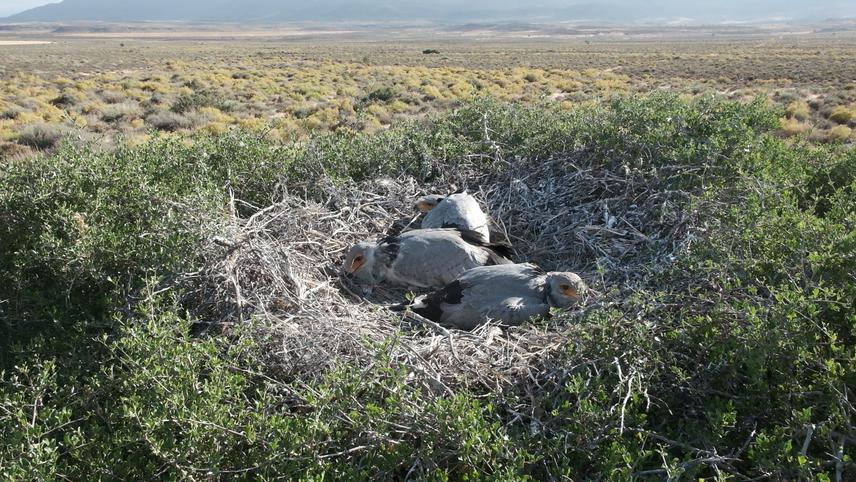Wesley Gush
Climate change will result in increasingly extreme hot weather conditions. Predicting the impacts for animals in environments prone to extreme heat events requires understanding the physiological and behavioural mechanisms they employ to tolerate such temperatures and the limits to their capacity to survive and reproduce under hotter conditions. Secretarybirds are large (2.3-4.3 kg) raptorial birds with a breeding and foraging ecology that exposes them to high environmental temperatures – their nests are fully exposed to the sun, and they hunt on foot in sun-beaten, open landscapes throughout the day. This species is a flagship for biodiversity in South Africa, featuring on the national coat-of-arms, and is widely recognized around the world for its unique appearance and behaviour. Sadly, several studies in the 21st century have shown severe declines in Secretarybird populations across their sub-Saharan range, with a variety of threats contributing to the problem.

Secretarybird chicks on the nest © Nick Smuts.
This project aims to understand the behavioural and physiological thermal tolerances of the Secretarybird, to determine whether future temperature increases may exacerbate current population declines and lead to range contractions. The initial aims are to: (1) study the breeding ecology of wild Secretarybirds to examine the effects of high temperatures on food provisioning and nestling health using camera traps and PIT tags; (2) determine whether movement data collected via telemetry mechanisms provide insights into thermoregulatory behaviour of Secretarybirds during foraging, particularly at the fledgling life-stage; (3) investigate behavioural mechanisms which free-ranging Secretarybirds employ to avoid high heat loads and how these influence daily activity patterns; and (4) use the above data to determine if Secretarybirds will experience range contraction or population declines with increasing global temperatures in the future.
The findings gained from this project will increase our understanding of Secretarybird environmental constraints and assist BirdLife South Africa and other conservation practitioners in determining the best way to safeguard this wide-ranging species in the face of future climate change. This information will also contribute to the regional Species Conservation Action Plan which is being planned for this species.
Header: Morphological measurements with supervisor and director of the Fitzpatrick institute, Dr Susie Cunningham © Nick Smuts.